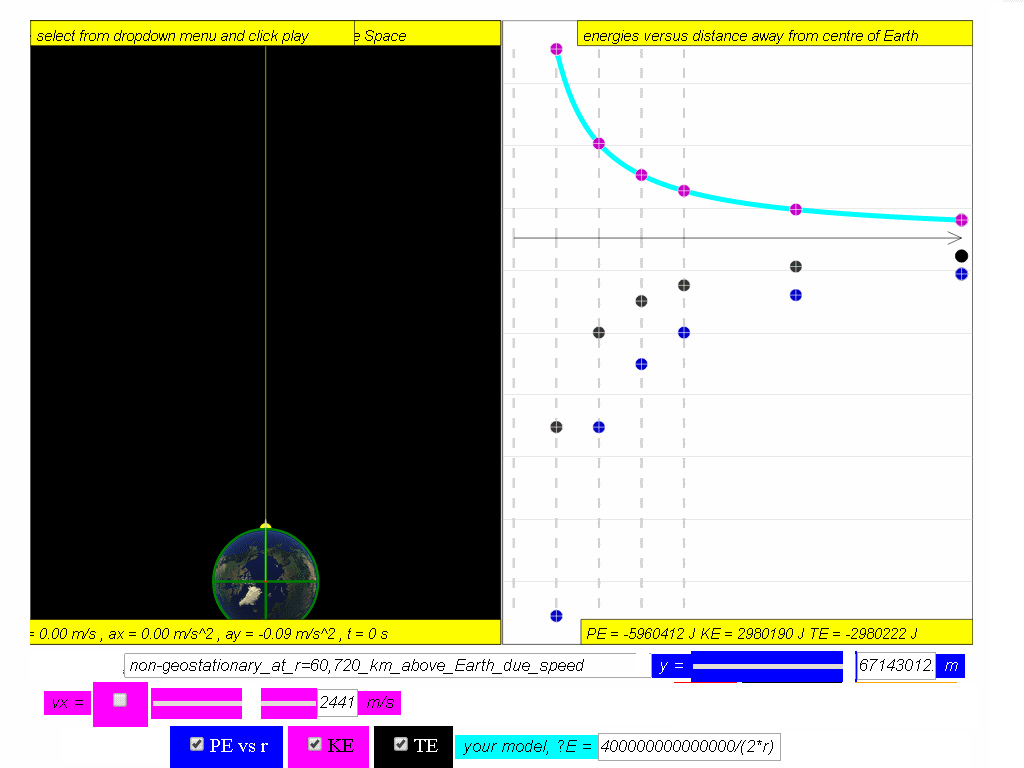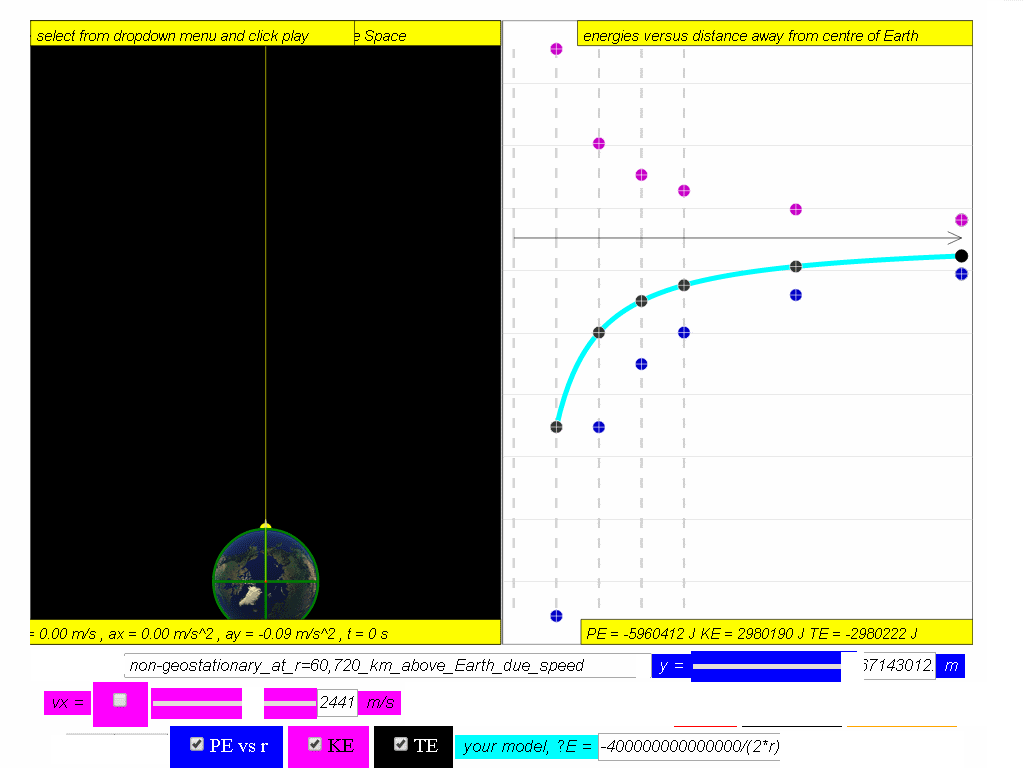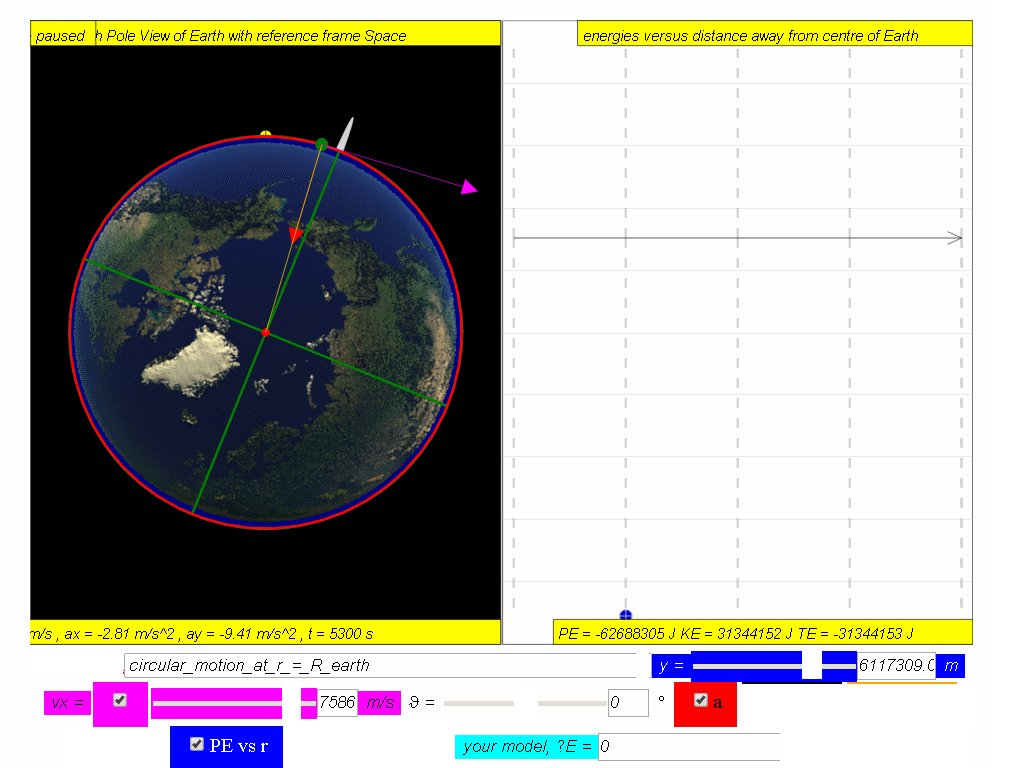

A satellite in orbit possesses kinetic energy, KE, (by virtue of its speed motion) and

gravitational
potential energy, PE, (by virtue of its position within the
Earth’s gravitational field).
Hence, total energy of a satellite,
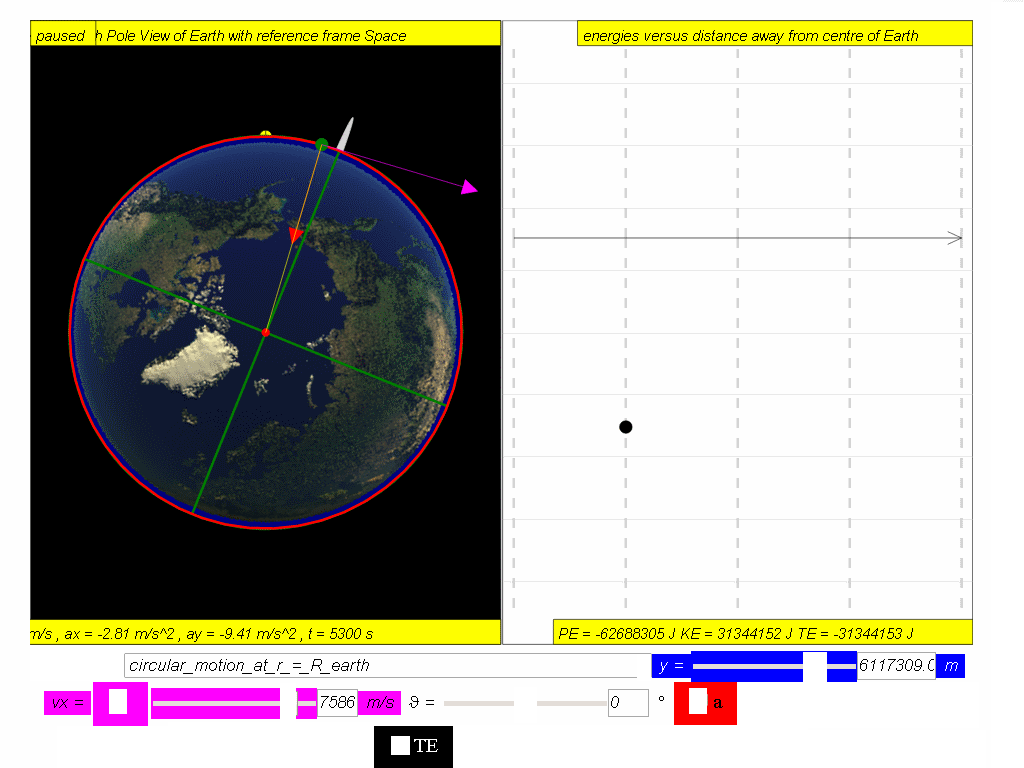
TE = PE + KE
--- Equation (1)
Recall that for a satellite in circular orbit, its gravitational
force acts
as the centripetal force:
ΣF = ma
simplifying and multiply by
---
Equation (2)
Substituting equation (2) into (1),
Hence total energy of a satellite, TE = PE + KE
A typical graph showing the relationship between PE, KE and TE
with respect to the distance, r, from centre of Earth, O, is as
shown.
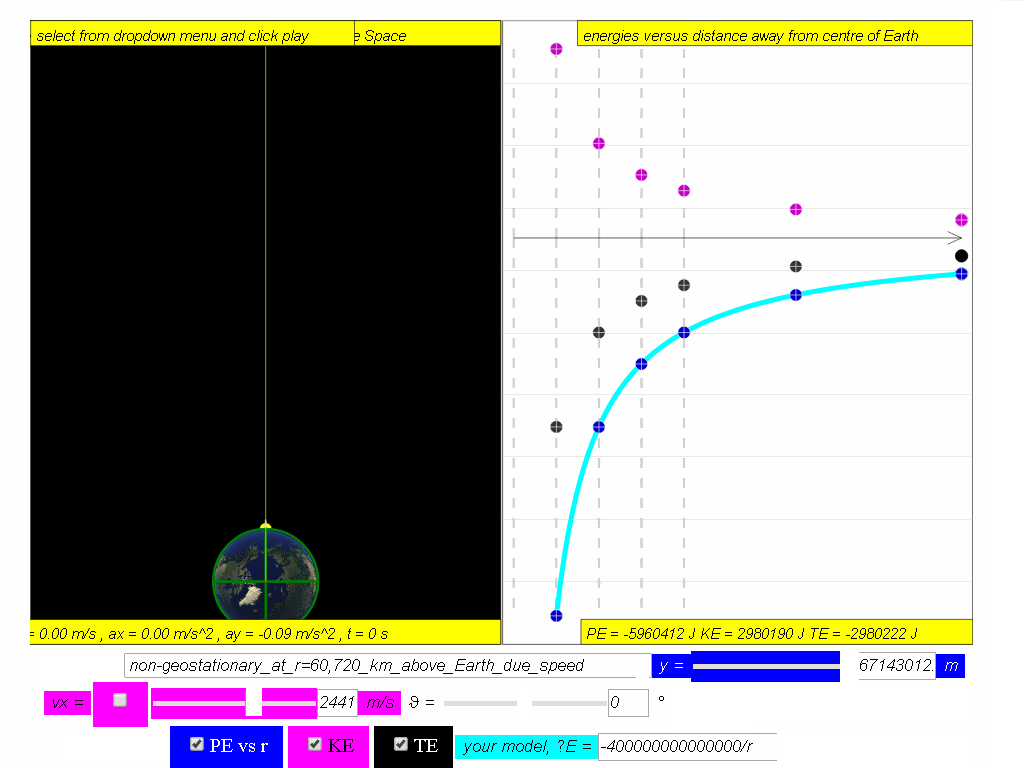
Assuming mass of object mobject = 1kg, Mass of Earth Mearth = 6.0x1024 kg, G =6.67x10-11 N m2 kg-2 , The potential energy PE =
similarly, determine the equation/model that describes KE and TE and key them into the simulation to test your understanding
